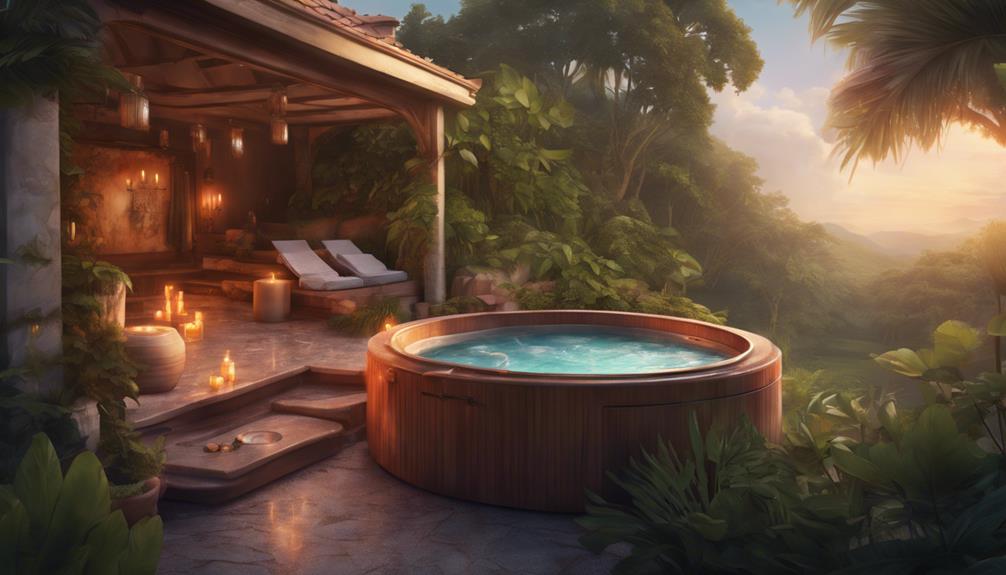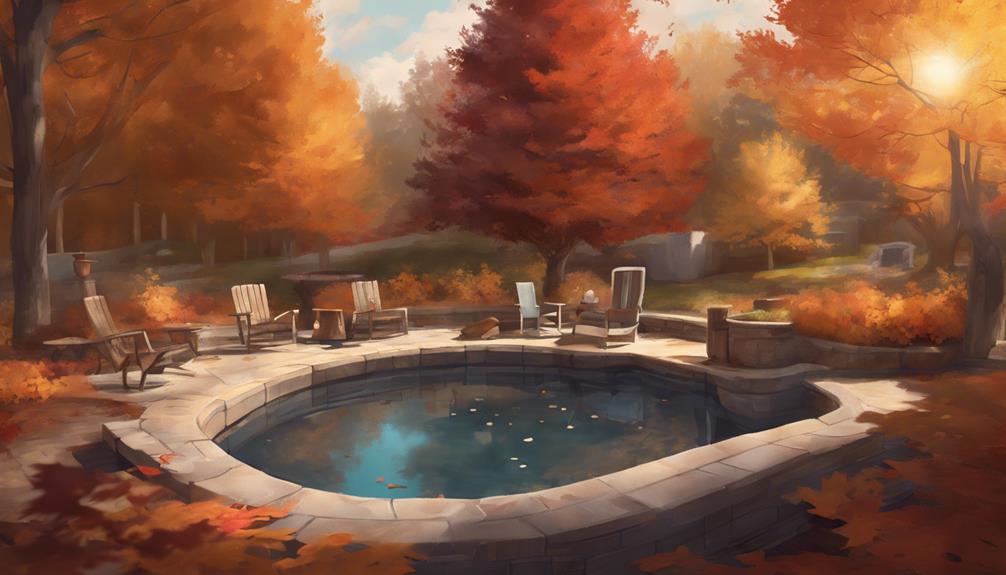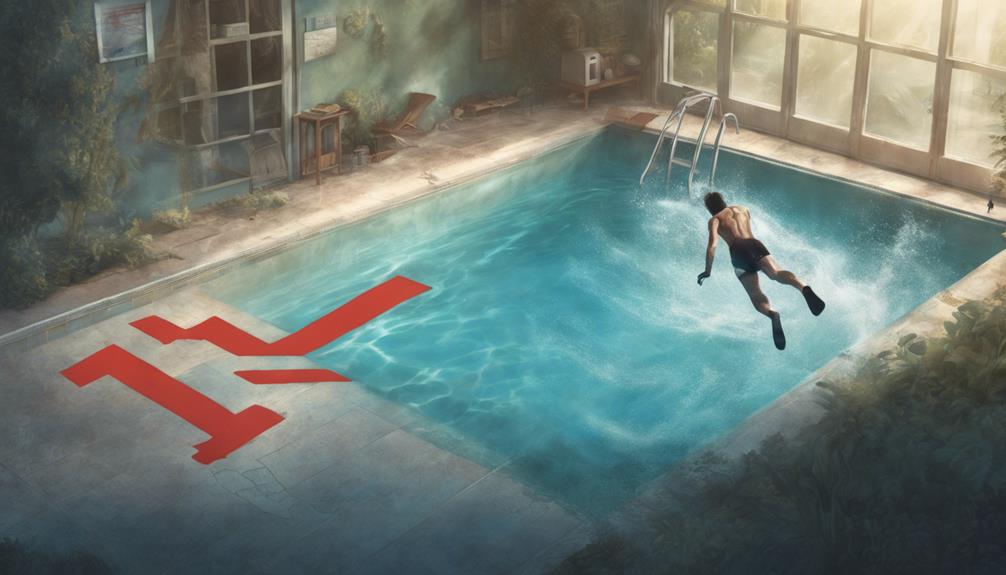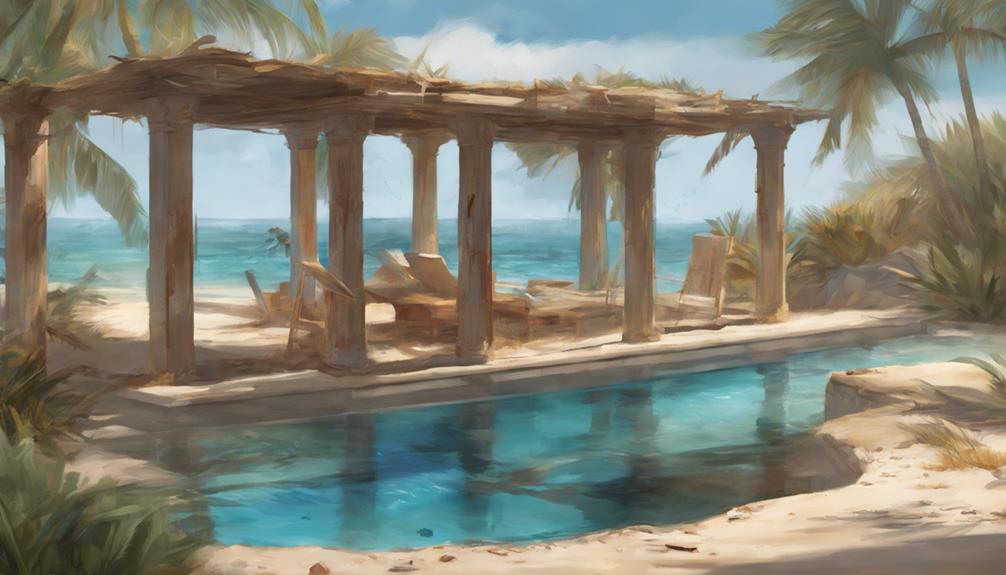Understanding the different types, origins, and current trends in hot tubs is crucial in finding the perfect fit for your relaxation and wellness needs. From luxurious Jacuzzis to portable hot tubs, each option provides a unique spa experience. Delve into the history of hot tubs, from ancient hot springs to modern designs, with an emphasis on energy efficiency and eco-friendly materials. Embrace advancements in technology such as smart controls and customizable jet features for the ultimate spa experience. Discover the ideal hot tub that perfectly matches your preferences and lifestyle.
Key Takeaways
- Consider energy-efficient options for sustainability.
- Opt for hot tubs with advanced technological features.
- Choose models with customizable jet and hydrotherapy upgrades.
- Look for smart controls and LED lighting for convenience.
- Explore portable hot tubs for versatility and easy installation.
Types of Hot Tubs
When considering the best types of hot tubs, choices range from luxurious Jacuzzis to convenient portable models. Jacuzzis offer a high-end spa experience with features like powerful jets, ergonomic seating, and advanced hydrotherapy systems.
Whirlpool hot tubs, similar to Jacuzzis, provide a relaxing massage experience with their massaging jets and soothing warm water. Spas, known for their therapeutic benefits, come in various sizes and designs to suit different preferences.
In-ground hot tubs, initially seen as pool accessories, offer a more permanent and integrated option for those seeking a casual or intimate setting. Portable hot tubs, on the other hand, are versatile and easy to install, making them a popular choice for homeowners looking for flexibility and convenience in their hot tub experience.
Origin and Evolution
The history of hot tubs traces back to ancient times when people first enjoyed the therapeutic benefits of soaking in warm water, evolving over the years to the modern innovations we see today. In ancient civilizations, hot springs were utilized for relaxation and healing purposes. The concept of hot tubs evolved from these natural hot springs to the first home hot tubs, which were primitive in design. Modern hot tubs as we know them originated in California in the 1950s, with the invention of the portable hydrotherapy pump by the Jacuzzi brothers. This innovation was inspired by a child receiving hydrotherapy treatment, leading to the development of the Jacuzzi brand and the widespread popularity of hot tubs for relaxation and wellness.
| Ancient Times | 1950s | Present Day |
|---|---|---|
| Hot springs relaxation | Invention of portable | Modern innovations |
| Healing benefits | hydrotherapy pump | in hot tub designs |
| Primitive home hot tubs | California innovation | Enhanced features |
Hot Tub Trends
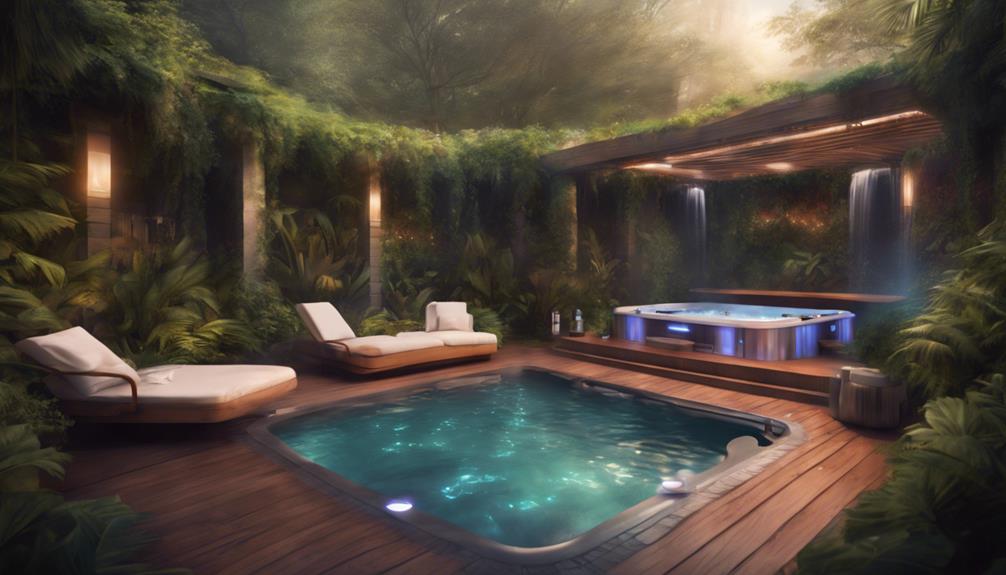
Hot tub trends are continually evolving to enhance the homeowner experience with a focus on energy efficiency and advanced technological features. In recent years, there has been a significant emphasis on advancements in pool design to cater to the evolving needs of consumers.
Homeowners are increasingly seeking environmentally conscious options that prioritize energy efficiency, leading to the integration of eco-friendly materials and systems in hot tub construction. Additionally, hot tubs now come equipped with advanced technological features, such as smart controls, LED lighting, and built-in entertainment systems, creating a luxurious and convenient spa-like experience.
Jet and hydrotherapy upgrades have also become popular trends, offering users a customizable and therapeutic soak to relax and unwind in their own homes.
Frequently Asked Questions
Are There Any Health Risks Associated With Using Hot Tubs?
Health risks linked with using hot tubs involve possible bacterial infections, skin irritation, and overheating. Adequate maintenance, routine cleaning, and adhering to manufacturer guidelines for temperature and usage duration can mitigate these risks and guarantee a safe hot tub experience.
How Often Should I Clean and Maintain My Hot Tub?
To maintain peak hygiene and performance, it is recommended to clean your hot tub at least once a month. Regular maintenance includes checking and adjusting the water chemistry, cleaning the filters, and ensuring proper functioning of all components.
What Is the Average Lifespan of a Hot Tub?
The average lifespan of a hot tub typically ranges from 5 to 20 years, depending on factors like maintenance, usage, and quality of materials. Regular upkeep, timely repairs, and proper care can help extend its longevity.
Can Hot Tubs Be Customized to Fit Specific Needs?
Hot tubs can be customized to fit specific needs by incorporating adjustable features such as jet speed, direction, lighting, and seating options. This flexibility allows individuals to tailor their hot tub experience to meet their unique preferences and requirements.
Are There Any Regulations or Permits Needed to Install a Hot Tub at Home?
Exploring the waters of home hot tub installation requires a keen eye for detail. Before diving in, be certain to check local regulations and permit requirements. Compliance guarantees a smooth journey to creating your personal oasis.
Is a Hot Tub a Better Option Than Repairing or Replacing a Cracked Pool?
When faced with the dilemma of pool cracks repair or replace, some may consider a hot tub as a better option. A hot tub can provide a relaxing and therapeutic experience without the need for extensive repairs or replacements. It’s a cost-effective and low-maintenance alternative for those dealing with cracked pools.
Conclusion
To sum up, the world of hot tubs offers a diverse range of options for relaxation and rejuvenation, from traditional in-ground designs to modern portable choices.
As trends in hot tub technology continue to evolve, a focus on energy efficiency and enhanced user experiences has reshapped the landscape of home hydrotherapy.
One interesting statistic to note is that the global hot tub market is projected to reach $7.1 billion by 2025, reflecting the growing popularity and demand for these luxurious amenities.

